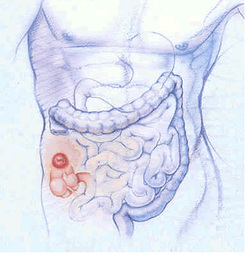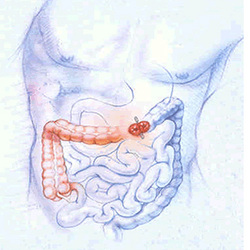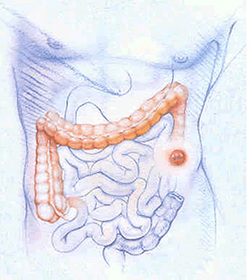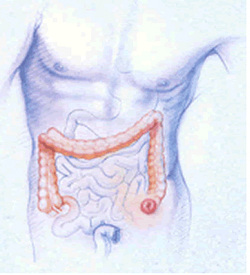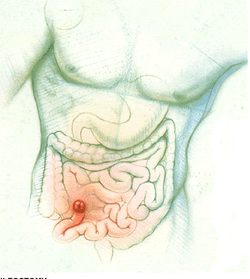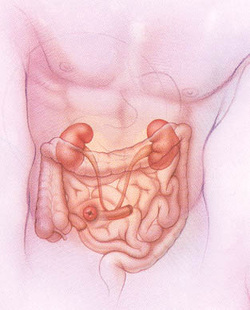Common Types of Ostomy Surgeries
A colostomy is a surgically created opening in the abdomen through which a small portion of the colon is brought up to the surface of the skin. This new opening, called a stoma, allows stool to pass directly out of the body, bypassing a diseased or damaged section of the colon. In some patients, this section may be removed. There are four main types of colostomies, named after the portion of the bowel where the colostomy is located:
Illustrations courtesy Convatec
